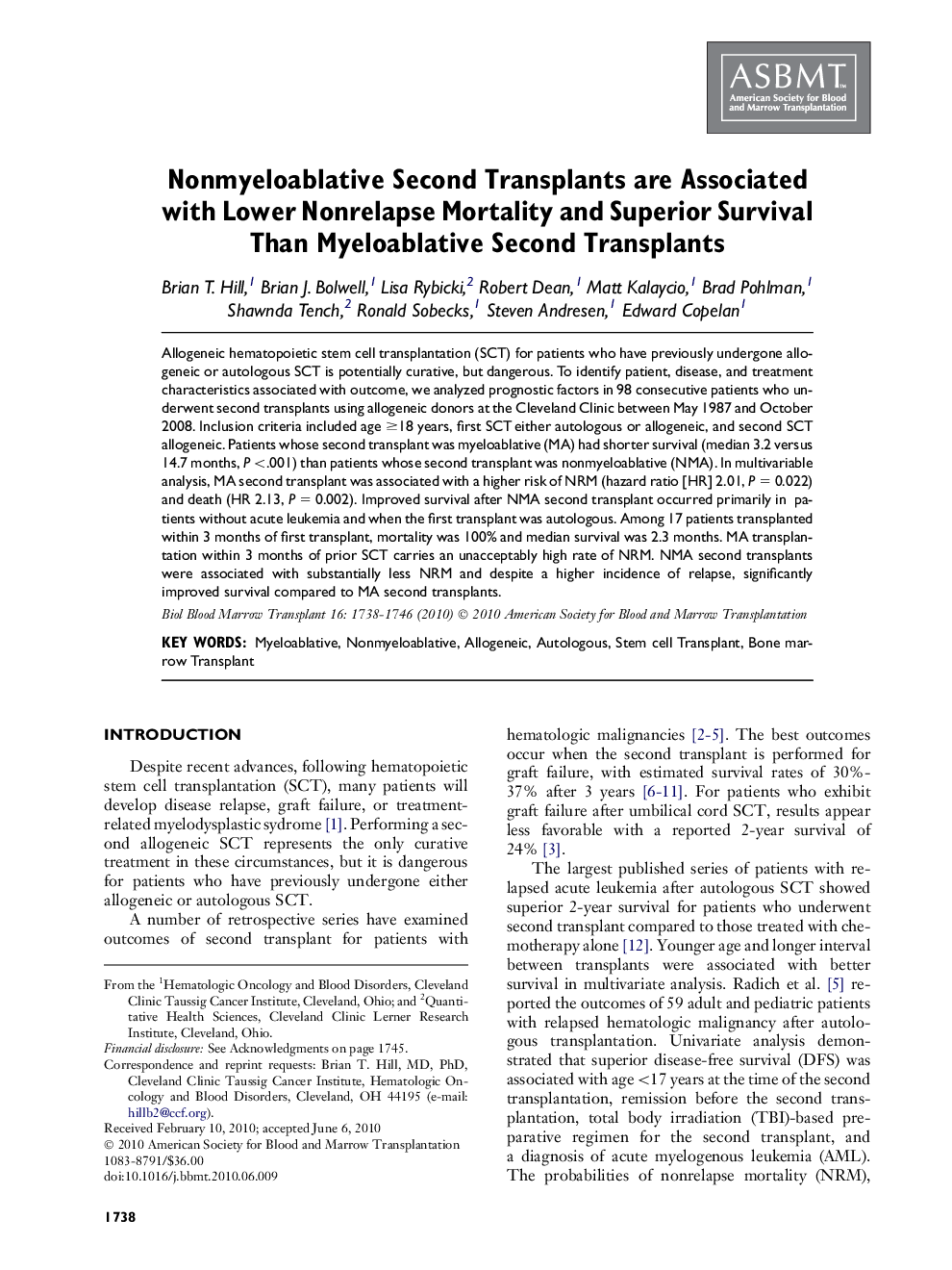| Article ID | Journal | Published Year | Pages | File Type |
|---|---|---|---|---|
| 2103664 | Biology of Blood and Marrow Transplantation | 2010 | 9 Pages |
Allogeneic hematopoietic stem cell transplantation (SCT) for patients who have previously undergone allogeneic or autologous SCT is potentially curative, but dangerous. To identify patient, disease, and treatment characteristics associated with outcome, we analyzed prognostic factors in 98 consecutive patients who underwent second transplants using allogeneic donors at the Cleveland Clinic between May 1987 and October 2008. Inclusion criteria included age ≥18 years, first SCT either autologous or allogeneic, and second SCT allogeneic. Patients whose second transplant was myeloablative (MA) had shorter survival (median 3.2 versus 14.7 months, P < .001) than patients whose second transplant was nonmyeloablative (NMA). In multivariable analysis, MA second transplant was associated with a higher risk of NRM (hazard ratio [HR] 2.01, P = 0.022) and death (HR 2.13, P = 0.002). Improved survival after NMA second transplant occurred primarily in patients without acute leukemia and when the first transplant was autologous. Among 17 patients transplanted within 3 months of first transplant, mortality was 100% and median survival was 2.3 months. MA transplantation within 3 months of prior SCT carries an unacceptably high rate of NRM. NMA second transplants were associated with substantially less NRM and despite a higher incidence of relapse, significantly improved survival compared to MA second transplants.
